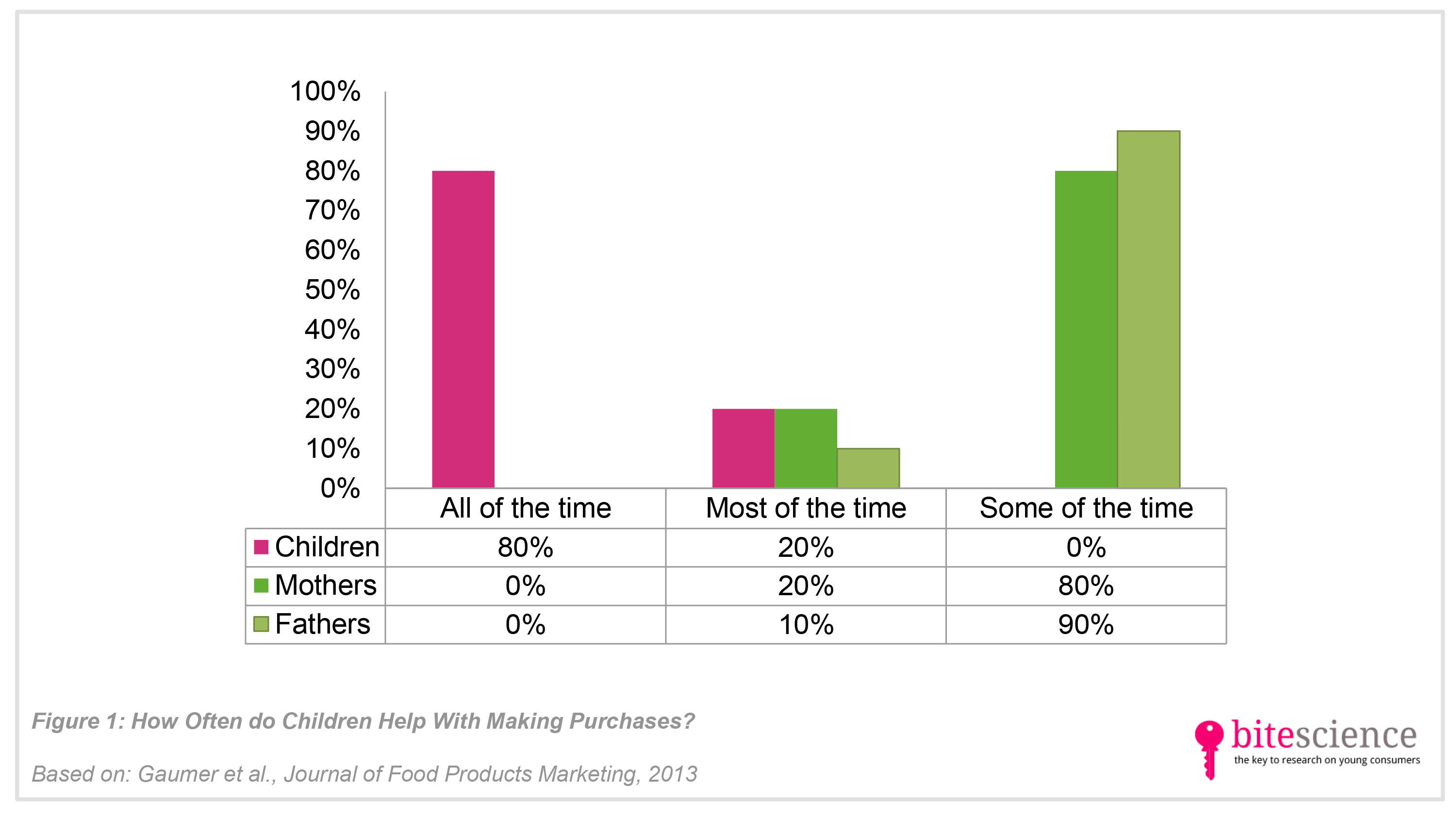
Children’s Influence on Family Food Purchases
Children can choose from a wide range of strategies to influence their parents’ household purchases. They can, for example, nag, pester, and pout in order to get what they want. But how successful are these strategies? A study in the Journal of Food Products Marketing shows that most children believe they are pretty successful in influencing their parents’ household purchases. Parents, however, feel their child is only somewhat involved in the purchase decision process.
Take aways
- Children and parents differ in their perceptions of children’s influence on household purchases:
- Children feel they have a big influence on their parents purchases, whereas parents feel their child is only somewhat involved in the purchase decision process.
- Parents believe they often deny purchase requests of their children, whereas children believe parents give in or negotiate about purchases.
- The most successful strategy in influencing purchases, according to parents and children, is the one where children just ask for the product they want, without proceeding to nagging and crying.
- Food marketers must take into account that stimulating children’s nagging behavior may have the opposite effect.
Study information
The question?
How do children (4-7 years old) influence household purchases, and how successful are they?
Who?
20 families: 20 4- to 7-year olds (26% were boys) with their mom and dad
Where?
Maryland, United States
How?
All family members (mom, dad, child) were interviewed separately. Parents were asked about the strategies their children use to influence their purchases (e.g., persuading, requesting, reasoning, using emotion), their response to these strategies, and the final influence children have on their purchases. The questions for the children were the same, but asked from the child's point of view.
Facts and findings
- The majority of the children in this study (88%) said they ‘just ask’ for the products they want to have (i.e., requesting strategy).
- The majority of the mothers (60%) on the other hand, admitted their child quickly proceed to persuasion strategies, such as nagging and pestering, whereas half of the fathers said their child mostly didn’t repeat the question a second time.
- According to the kids, parents responded differently to their requests, sometimes by giving in, sometimes by refusing, and sometimes by negotiating.
- In contrast, the majority of the parents (70%) said they mostly denied their child’s request by saying no.
- The vast majority of the children believed they often help their parents with making purchases, whereas most of the parents felt their child only sometimes influenced their purchases, see Figure 1.
- Parents, as well as their children, indicated that emotional strategies, such as crying and pouting, were the least effective ways to influence purchases. They felt direct asking was most successful.
- Critical note: The researchers only interviewed 20 families, and the conclusions may not hold for all families.
